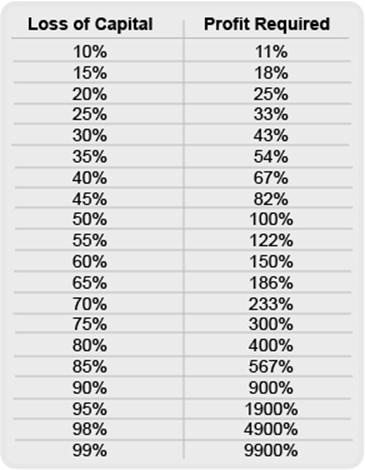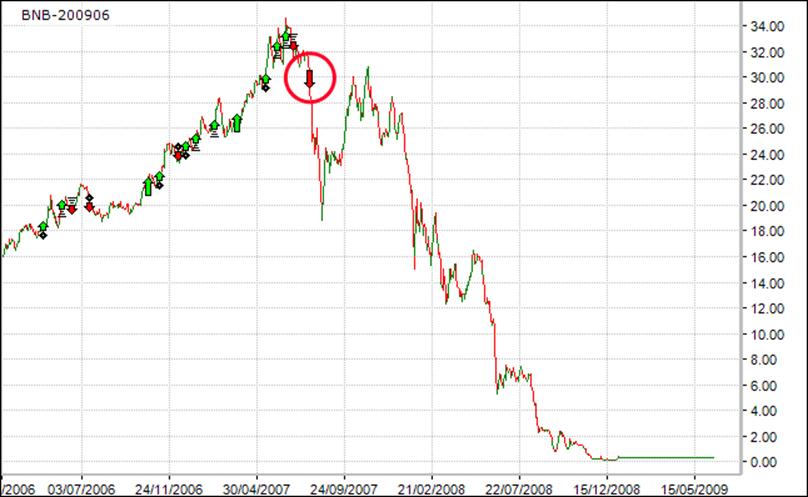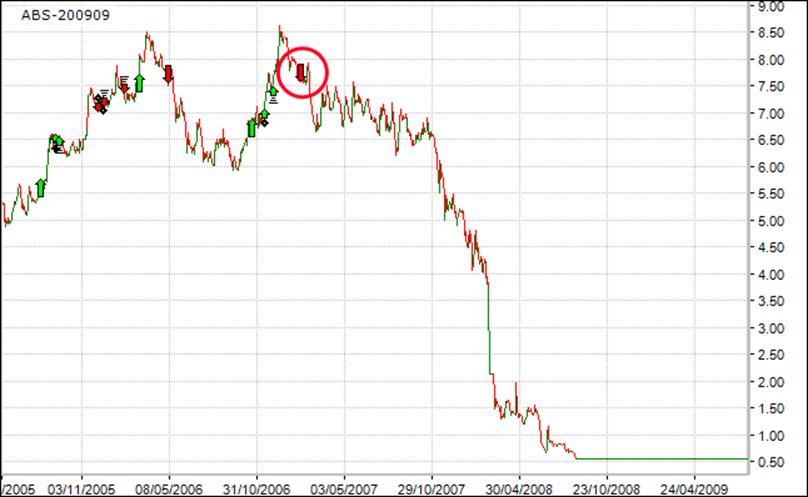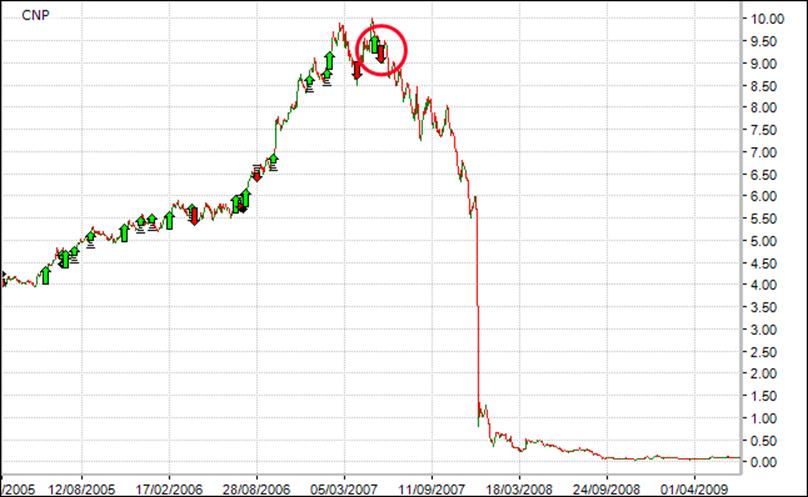Unfortunately, at some stage or another, nearly every honest investor has had to live through the pain of not exiting a position when they should have. Instead they’ve found themselves justifying that things will improve and turn around.
There is one common thread among great traders and investors; their management of risk and their ability to resist going for broke.
As you will soon understand you can afford to lose 10%, 15%, 20% and even 25% of your capital in a single trade but once you start losing 30% plus in a single trade the task of making your money back becomes increasingly harder and harder.
 Have a look at the table on the left to what happens when you have a 50% loss trade. You need to make 100% in the following trade(s) to get your money back. It becomes exponential, the larger the loss trade, the higher the probability that you won’t get your capital back. This is why capital preservation is the number one game and critical to long term success. It should always be the focus of your attention. If the trade does not go in the direction you are trading, at some stage you need to be prepared to say “I am wrong” and close the position.
Have a look at the table on the left to what happens when you have a 50% loss trade. You need to make 100% in the following trade(s) to get your money back. It becomes exponential, the larger the loss trade, the higher the probability that you won’t get your capital back. This is why capital preservation is the number one game and critical to long term success. It should always be the focus of your attention. If the trade does not go in the direction you are trading, at some stage you need to be prepared to say “I am wrong” and close the position.
This can be a real challenge for investors as no one enters a trade thinking that it’s going to be a loser, so you need to have a trigger or exit point where you cut your losses and move onto the next trade. To avoid the pain of a broken heart, be prepared to exit each and every trade you enter and protect your capital from falling stocks.
Exit signals for protection of capital
Let’s have a look at examples of some high flyers that investors fell in love with before the 2008 Global Financial Crisis. While these examples are a few years old, the pain of being in these losing trades never leaves an investor.
Stocks like Babcock and Brown, Centro and ABC Learning appear in the charts below. All felt the full brunt of the Global Financial Crisis – So much so that all but one no longer exist! But the question remains, what were DIY investors doing in these stocks, when the writing was on the wall, well and truly before the actual event? Further to the point, those investors trying to bottom pick stocks on the way down were also left with burnt fingers.
The example charts below display the exact point in time where SPA3 customers exited these trades. SPA3’s researched timing approach caught the fall in momentum and when SPA3 criteria were met, exits were triggered.

Babcock and Brown fell from the SPA3 exit signal of $28.68 on the 27th of July 2007 to ZERO. If you were holding this stock, your money is gone!

ABC Learning fell from the SPA3 exit signal of $7.65 on the 2nd of Feb 2007 to ZERO. If you were holding this stock, your money is gone!

Centro Properties Group fell from the SPA3 exit signal of $9.06 on the 25th of May 2007 to its current lows of 2 cents. If you were holding this stock your MONEY is almost gone!
I use these examples to explain the benefits of following a system that has a researched edge. At the time these stocks began to fall, neither I nor any investor could imagine that these much followed large market cap stocks would end up being worthless.
This is why preservation of capital is so critical to long term success. If a trade does not go in the direction you are trading, you need to be prepared to exit and cut the trade from the portfolio.
Research tells us that most investors hold onto these stocks and others because they fear realising the loss by selling and they don’t know where to put their money next if they did sell. This then creates a situation that many are not prepared for, either selling for a large loss or holding on for the long term in the hope that the stock will one day return to its original buy price.
As a trader or investor you must learn when it’s time to leave the party. We never know if a trade will be a winner but we can control the risk of the trade


